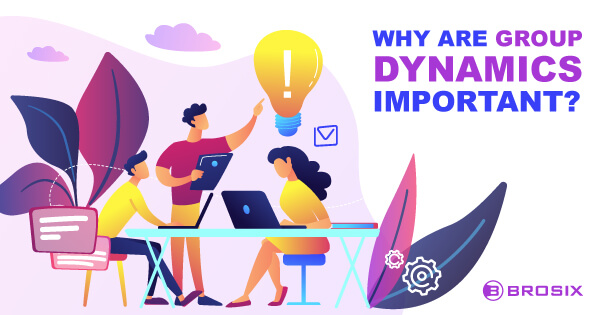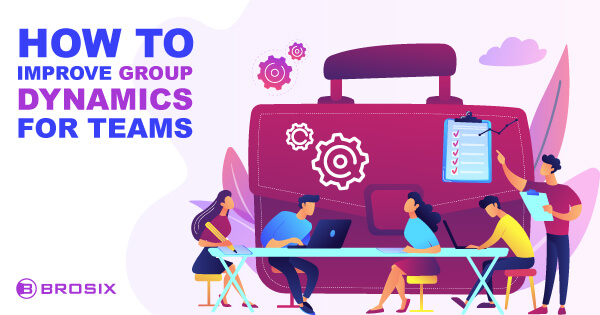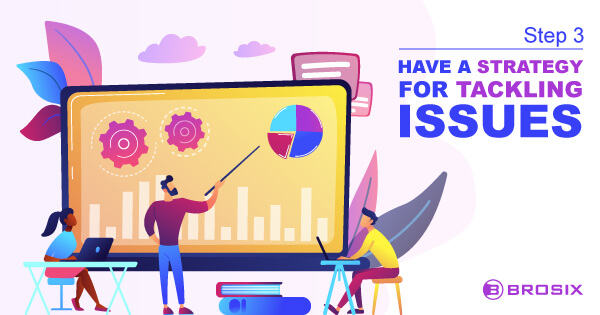Developing excellent group dynamics in a workplace is an impressive achievement.
After all, even if many of your employees have similar skill sets or educational backgrounds, they all have different personalities, work ethics and communication styles. As a result, there’s always a risk of conflict in any team environment. However, while cultivating positive group dynamics can sometimes be challenging, it can also pay significant dividends.
Improving group dynamics means enhancing the connections between teams, strengthening cooperation and collaboration, eliminating issues and ensuring that everyone can work together in harmony. The better your group dynamics, the more attractive your company culture becomes, and the more productive and efficient your workforce will be.
Today, we’re going to explore everything you need to know to start developing a strong group dynamic in your workplace.
What Are Group Dynamics? Group Dynamics Definition
Let’s start with the basics: What are group dynamics?
The term “group dynamics” was coined by a social psychologist named Kurt Lewin in the 1940s. He found that in a group environment, people often adopt specific roles and behaviors. These roles and behaviors have an impact on the efficacy of the group. When group dynamics are positive, people work together collaboratively, share ideas transparently and cooperate consistently.
When the dynamics of a group are poor, on the other hand, conflicts arise, productivity suffers and teams lose direction. Ultimately, poor group dynamics damage the connections between workers, reduce productivity, and even increase the risk of burnout.
So, what’s involved in building constructive group dynamics?
While the exact structure of the most effective team for any business can vary, researchers have found that the following factors can contribute to higher levels of team effectiveness:
- Compelling direction: Every team should have a goal, and a shared focus. The best “groups” are unified by a comprehensive vision of what they want to achieve. They know the role they play in the workforce and what they need to do to support their colleagues.
- A supportive environment: The right company culture makes a huge difference to group dynamics. When employees feel safe in their role, trust their team members and feel respected by leadership, they’re more likely to thrive. In fact, teams with inclusive leadership achieve 90% higher levels of innovation and 50% higher performance levels.
- A strong structure: Every effective team has a good structure. High performing teams need to be able to access guidance, follow standard operating procedures and adhere to specific guidelines. They also have access to the resources they need to cultivate effective teamwork, such as collaboration tools, communication skills and conflict resolution skills.
Why Are Group Dynamics Important?

In simple terms, good group dynamics make businesses more profitable, productive and efficient. When teams can work seamlessly together, they accomplish more, with fewer issues. Good group dynamics, defined by excellent communication skills, consistent collaboration and mutual trust between team members all drive better business results.
Teams that work cohesively together can solve problems more creatively, leverage each other’s strengths and overcome each other’s weaknesses. They can resolve conflicts quickly and easily, make intuitive decisions and work seamlessly as a team to achieve business goals.
On the other hand, poor group dynamics have the exact opposite effect on a business. If there’s no synergy between team members, the company culture becomes toxic, competitive and untrusting. Staff members may begin to actively attempt to sabotage their team members to make themselves look better. Teams could lose productivity because they don’t know what they’re working towards. Performance can even grind to a halt as a result of burnout and disengagement.
How to Improve Group Dynamics for Teams

Enhancing group dynamics in a workplace is all about creating a more collaborative company culture, where team members can work effectively together, focusing on the same shared vision. While the personalities of the people in your team will have an impact on how effectively they can work as part of a group, there are steps you can take as a business leader to improve group dynamism.
Step 1: Know Your Team
The first step in developing strong group dynamics, is understanding your team. When you know the strengths and weaknesses of your employees, their working styles, and even the communication methods they prefer to use, you can begin to build a stronger sense of synergy.
Identify who your employees are, their priorities, motivations, and pain points, and keep these in mind when deciding which employees should work together on projects. Learning about the challenges of your team members, and their different personalities can also help you to pre-empt potential conflicts that could cause problems in the future.
Step 2: Provide Clear Directions and Roles
As mentioned above, one of the core pillars of an effective team is clear direction. Employees work better, and trust their colleagues more if they’re all working towards the same shared goal. Make sure your staff members have a clear vision of what they need to accomplish, and give each employee a clear insight into the role they’re going to play within the team.
You might consider creating a team charter which defines the group’s mission or objective. Or you could share a document outlining clear goals on your messaging platform, to ensure everyone can refer back to your vision when they’re feeling lost.
Step 3: Have a Strategy for Tackling Issues

Even if you carefully construct your team with people who have similar personalities and working styles, the chances are that conflicts will eventually arise. Ensuring you have a strategy in place to address these problems means that small issues won’t derail the entire team. Teach your team members effective conflict resolution skills, and let them know who they should contact, or what they should do if they’re encountering a problem.
If you notice a team member acting poorly, or engaging in activities that might harm the group dynamic, address it quickly. For instance, if a staff member tries to dump all of their work onto another employee, ask them why they’ve chosen to delegate their tasks. You might find they would be better suited to working on another aspect of the project.
Step 4: Break down barriers for communication
Lack of effective communication is one of the most common causes of poor group dynamism. To ensure your employees can work together effectively, you’ll also need to make sure they can communicate. With this in mind, think of ways you can break down the barriers between staff. If you’re working with remote and in-office employees on the same project, for instance, use video conferencing to unify your workers with human, immersive experiences.
Think about the communication styles and preferences of each of your employees, and make sure you adhere to their specific needs. For instance, some employees may prefer to connect with their colleagues via a messaging service like Brosix, while others prefer face-to-face contact. Throughout any project, ensure your teams have a range of ways to communicate.
Step 5: Preserve Inclusivity and Transparency
Finally, the best group dynamics are built around a culture of inclusion and transparency. Inclusive leadership is essential to cultivating a sense of psychological safety and belonging among your workforces. With that in mind, think about how you can ensure every staff member feels like a crucial member of the team. You could even look into group bonding exercises, to improve internal relationships, or inclusivity training to minimize unconscious biases.
Part of ensuring your company culture remains inclusive and supportive also means focusing on transparency. Make sure all of your team members have access to the same information throughout a project, so one employee doesn’t feel more “left out” than others. If something about a team’s purpose or task changes, make sure everyone is aware by sending out a team-wide alert.
Building and Maintaining Group Dynamism

Cultivating excellent group dynamics takes time and commitment. Even if your employees share similar personalities and working styles, ensuring they can all collaborate together in a synchronized format can be challenging. Follow the steps above to build an environment where group dynamism and thrive, and keep an eye out for any issues that might damage the synergy of your team.
The more time you spend on cultivating positive employee relationships, eliminating issues when they arise, and strengthening team connections, the more successful your team will become.






